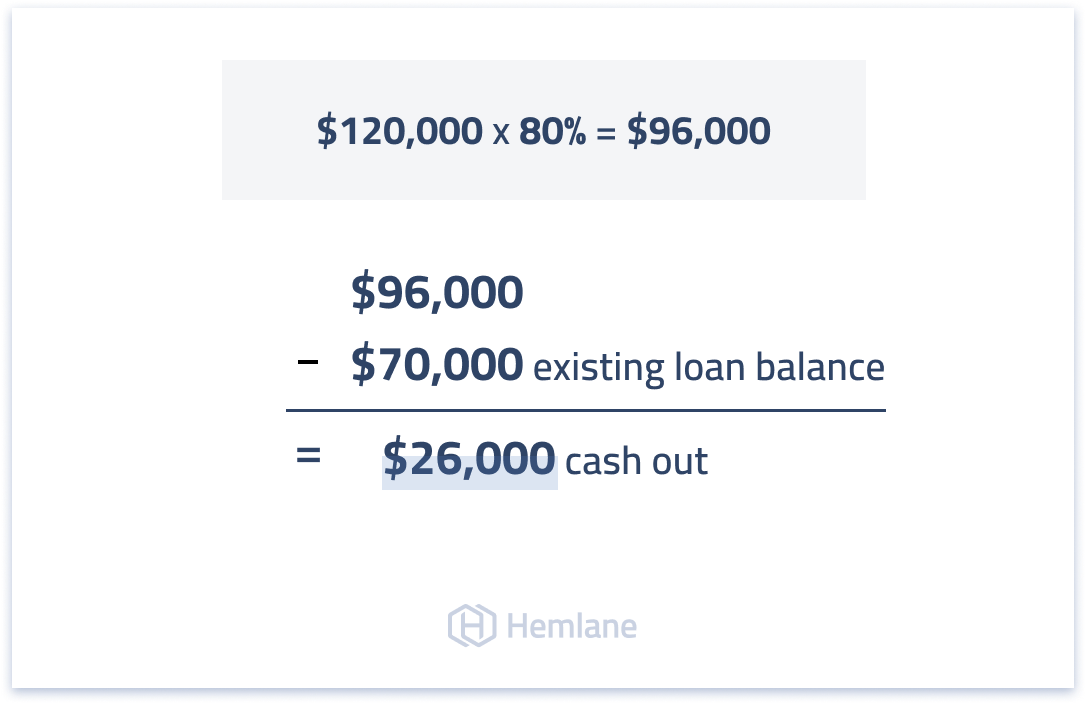The BRRRR method explained in 5 simple steps [+ downloadable worksheet]
Although BRRR might sound like something you’d hear in the middle of winter, it’s actually one of the hottest ways to invest in real estate today. Popularized over the past decade, the BRRR method is actually a long-standing tried and tested method of real estate investing.

In short, the BRRR method of real estate investing means buy, rehab, rent, refinance, and repeat. That is, you buy a value-add or undervalued property, renovate and rehab it to market standards, get tenants in there, and refinance it based on your new market value to pull out your original (or more!) cash investment. You can then set up your remote property management system, and then you rinse and repeat.
Is there a difference between the BRRR and BRRRR methods of real estate investing? Not really, they mean the same thing except one method is missing the final ‘R’ for ‘Repeat’. In this article, we’ll explain how the BRRRR method works in 5 simple steps, how to do your first BRRRR, and where to find distressed properties that could make the perfect BRRRR investment.

What does BRRRR mean?
BRRRR is a simple real estate investment strategy that any rental property investor can use to build a portfolio of cash-flowing properties, even if you’re just starting out. BRRRR stands for...
- Buy – Rehab – Rent – Refinance – Repeat
Although BRRRR might sound too good to be true, the fact is that by using BRRRR you can grow your real estate portfolio with very little or no extra capital after you invest in your first property.
If you buy and renovate correctly, at the end of your BRRRR you should be in a position to refinance to get all or more of your original capital back to repeat the process over again. It’s how many real estate investors build up a larger portfolio of properties with not a lot of outside capital.
The key to the BRRR method of real estate investing hinges on two critical components: (1) finding the right property at the right price; and (2) not overspending on, or failing at, the renovations. This requires a strong contractor team, as well as a solid network to find you the right deals at the right price.
How the BRRRR method works
There are 5 simple steps to the BRRRR method for investing in real estate:

Step #1: Buy
Invest in your first rental property. The most affordable and easiest properties to find are single-family homes and small multifamily properties with no more than four units.
The key to this BRRRR method step is to find undervalued properties that require a bit of work. The outstanding deferred maintenance on the property itself is why these properties are typically for sale at lower prices.
You need a strong network of agents, brokers, wholesalers, and other investors. This will give you an edge to developing better deal and lead flow. The more people in your network who know your criteria, the more deals you can analyze as a potential BRRRR prospect.
Step #2: Rehab
The next step is to repair and remodel the property right away. This requires strong estimation skills and a contractor who has serious experience remodeling and renovating properties. For a repair template, feel free to print out and use:

By renovating and updating, you are adding value to the property which causes it to appreciate above and beyond the normal appreciation rate in your market.
Step #3: Rent
Rent the home out to a qualified renter as quickly as possible, because the longer the property sits vacant the more cash you lose out on. However, never cut corners when it comes to tenant screening, this is a critical component of your real estate business.
Always screen prospective tenants by running a credit report, conducting a thorough background check, and pulling a rental history report.
Step #4: Refinance
Here, you will work with a professional broker or bank to refinance the property and pull cash out with a cash-out refinance.
You’ve bought an undervalued property, added value, and now it’s time to leverage that value in your cash-out refinance. Most lenders will allow an 80% loan-to-value (LTV) ratio which means you’ll need to leave a safe margin of 20% of the equity in the property.
Step #5: Repeat
So what do you do with the money you pull out when you refinance the property?
The answer, of course, is that you reinvest the capital from your cash-out refinance in another home. Buy low, add value through rehabbing, rent it out, and then pull cash out to reinvest in a third property when the time is right.
BRRRR is a classic example of rinse, wash, and repeat!
BRRRR refinance example

Step 1: Buy a duplex property for $100,000 in a neighborhood where the average home price is $200,000.
Step 2: Through your cost estimation, you figure out that $30,000 of investment will bring the property to a rental-ready state over the next 4 months.
Step 3: You then find tenants in 30-60 days to take over the two units with leases.
Step 4:
- Appraise the property at $200,000 since your renovations brought the property up to a neighborhood comparable standard, and you have long-term leases in place.
- A lender will give you $160,000 (80%) as a loan on the property.
- Since you purchased for $100,000, and put in $30,000, you’re left with $30,000 in profits.
Step 5: This is the easy part...Repeat!
Pulling cash out of a BRRRR investment
Here’s another quick example of how to specifically use the cash-out refinance step in the BRRRR method to pull money out of your property.
Let’s say you purchased a $100,000 rental home with a 20% down payment. The property now has an outstanding mortgage balance of $70,000 since you’ve been paying down the loan.
Thanks to the value you added to the property through your rehab work and normal appreciation in your real estate market, the home now has a fair market value of $120,000.
Your total equity is $50,000 ($120,000 property value - $70,000 loan balance) but you’ll need to leave part of that money in the property so that your LTV is 80%. That means you can pull out $26,000 in cash:
- $120,000 x 80% = $96,000 - $70,000 existing loan balance = $26,000 cash out

How to do your first BRRRR
If you don’t already own a home as your primary residence, you can buy one with as little as 3% down or with no down payment if you qualify for a VA loan. If the home you’re buying requires a lot of renovation work you may be able to finance renovation costs with a Fannie Mae HomeStyle loan or an FHA 203(k) rehab mortgage.
You’ll need to live in the home for two years in order for it to qualify as a principal residence. During that time you can add value by slowly doing renovations and updates that add value, then do a cash-out refinance or apply for a HELOC (home equity line of credit) to pull cash out to reinvest.
If you already have the funds available for a 20% - 25% down payment on an investment property you can use that capital instead to buy a rehab rental. Some BRRR investors also use hard money loans as short-term financing to buy and renovate a rental property. Although interest rates and fees on hard money loans are higher, you have more flexibility on how to use the funds.
Where to find BRRRR properties
The BRRRR method for investing in real estate is ideal for buying distressed property. Even though real estate is red hot in most markets across the U.S., there are still distressed home deals to find when you know where to look.
Some of the best ways to find BRRRR properties to invest include:
MLS
Find a real estate agent who understands the BRRRR method and ask them to search the MLS for distressed property. Sometimes homes on the MLS are listed as pre-foreclosures or short sales. Other indications a home on the MLS might make a good BRRR if it’s been listed for sale multiple times or if the property is still active significantly longer than the average days on market.
Driving for dollars
Sometimes the old-school method of looking for BRRR properties still works the best. Once you’ve selected a target area to invest in, drive around each neighborhood looking for signs a property may be distressed.
According to Realtor.com, some telltale signs of distressed properties that could make good BRRR investments include:
- Properties that stand out from other homes in the neighborhood due to their state of neglect
- Houses where the lights aren’t turned on at night
- Homes with overgrown front yards, broken windows, and faded paint
- Notices posted on the doors or windows, as with a pre-foreclosure notice
- Piles of uncollected newspapers or junk mail overflowing near the front door
Wholesaler
Real estate wholesalers make their money by finding a distressed property, putting the home under contract, then assigning the purchase offer to a BRRRR real estate investor. Once repairs are made, the ARV (after repair value) of the wholesale home should be less than the fair market value, giving you instant equity in your BRRR investment.
Online listing sites
If you’re a remote real estate investor looking for BRRR homes to buy there are plenty of websites you can use for finding foreclosures and distressed property:
- Government listing websites include HUD.gov, HomeSales.gov, and FHA Single Family Real Estate Owned Properties
- Bank REO (real estate owned) sites for finding BRRR property include Wells Fargo, CitiMortgage, and Bank of America
- HomePath and HomeSteps list foreclosure homes being sold by Fannie Mae and Freddie Mac, while Equator has listings of both short sale and foreclosures properties
- RealtyTrac and Foreclosure.com are two paid websites for finding distressed properties with detailed owner information and property addresses
Closing thoughts on the BRRR method
The BRRR method for investing in real estate is easy to follow with the 5 easy steps: Buy, Rehab, Rent, Refinance, Repeat.
BRRR is a great way to scale up and grow your cash flow by using the equity from your first property to buy more cash-flowing rentals.
While it takes time to add value through rehabbing BRRR properties, you can easily add to your real estate portfolio by focusing on single-family homes and small multifamily properties with less than four units.




